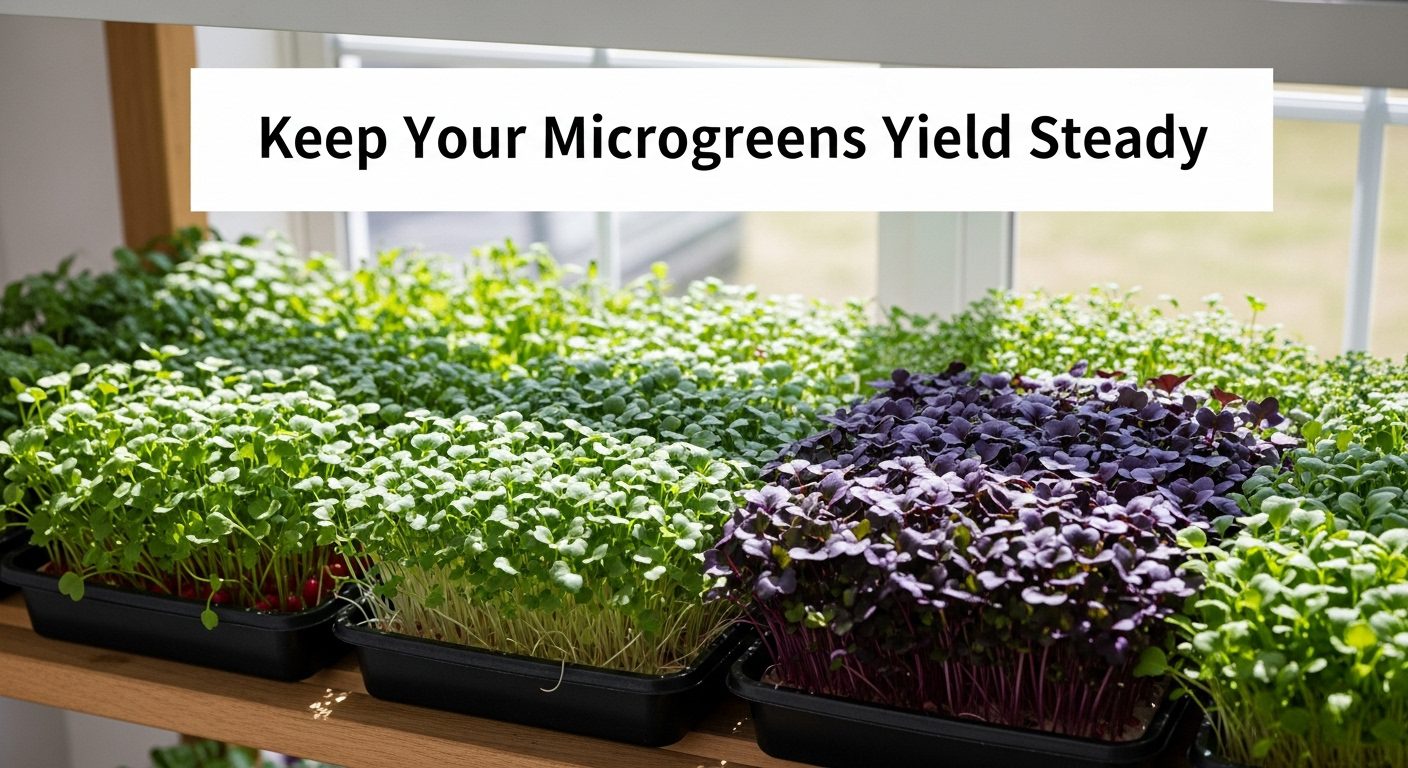
Imagine a magic forest in your backyard where soft light dances on flowers and leaves.
Turn your shady spot into a pretty garden with plants that love the shade, like ferns and moss. Add a warm fire pit for chilly nights and shiny paths to walk on.
Find secrets in your woods! Grow plants that whisper stories of the wild and build a cozy nook to relax.
Each corner can be a new adventure with nature’s touch. Discover how to make your space a peaceful paradise.
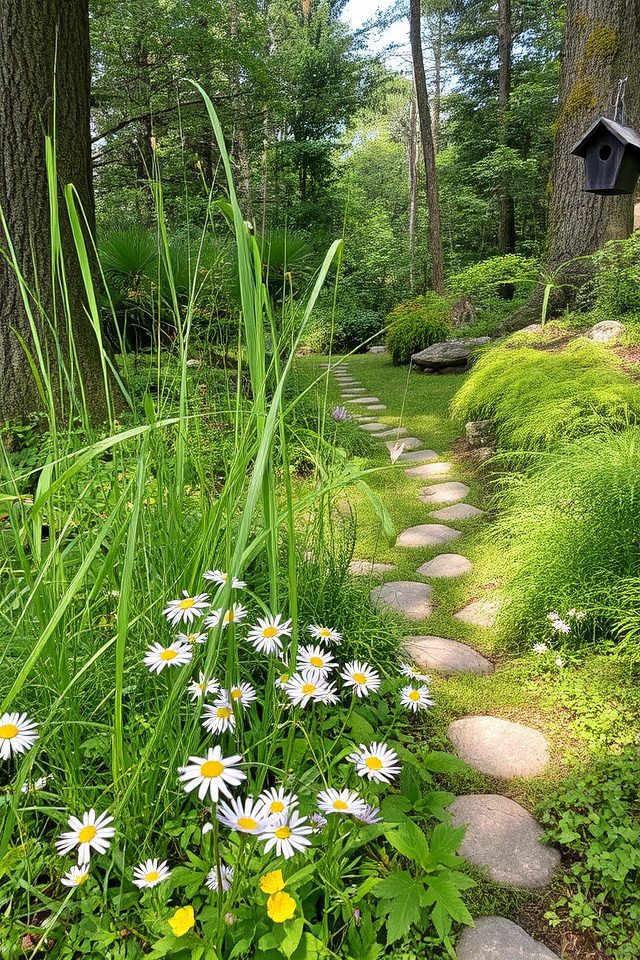
Embracing native plants in wooded areas is a sustainable way to enhance your garden’s beauty while supporting local ecosystems. Native plants are well-adapted to the local soil, climate, and wildlife, requiring less maintenance and water than non-native species. They attract beneficial pollinators and other wildlife, creating a harmonious environment. Additionally, their natural resilience helps prevent soil erosion and promotes biodiversity, making your garden a vibrant and thriving sanctuary that complements the wooded surroundings.
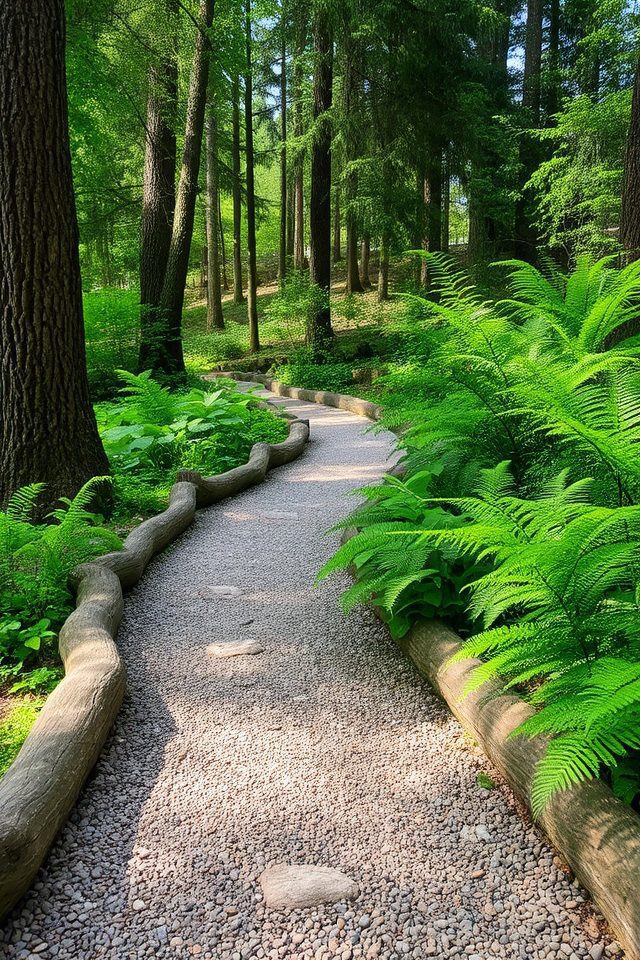
Creating a woodland pathway is a delightful way to enhance the natural beauty of your wooded area. Choose materials like natural stone, gravel, or mulch to blend seamlessly with the environment. Curved pathways can mimic the organic shapes found in nature, guiding visitors through the lush greenery. Incorporate stepping stones or wooden logs as borders, and flank the path with shade-loving plants such as ferns and hostas for an inviting, serene atmosphere.
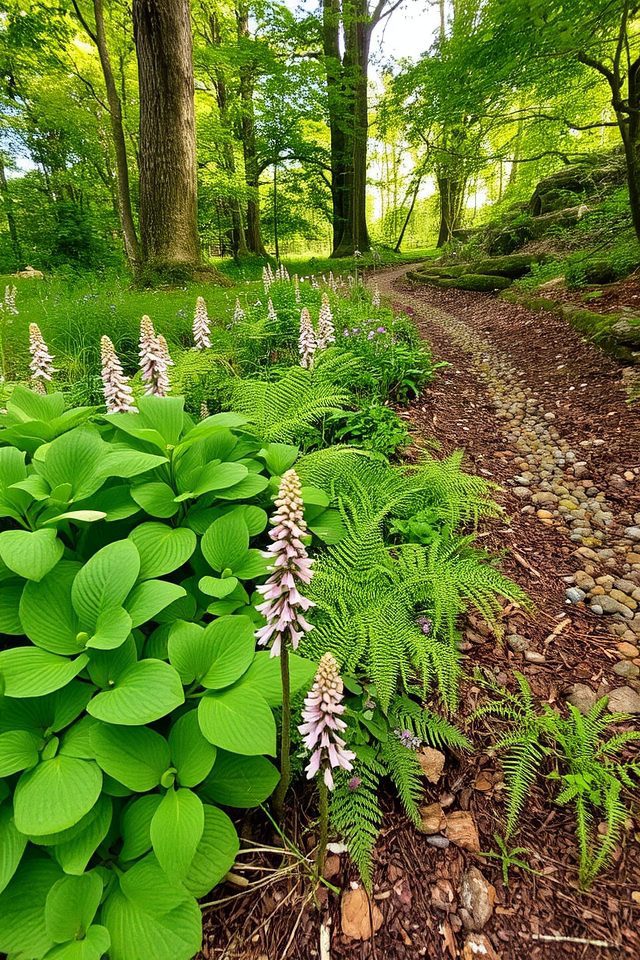
Incorporating shade-loving flowers into your garden design can transform a wooded area into a vibrant oasis. Plants like hostas, ferns, and astilbes thrive in low-light conditions, adding lush greenery and bursts of color to darker spaces. By selecting a variety of bloom times and foliage textures, you can create a visually appealing garden that flourishes under the canopy. Consider layering these flowers with taller plants for added depth and interest, ensuring your woodland garden remains lively year-round.
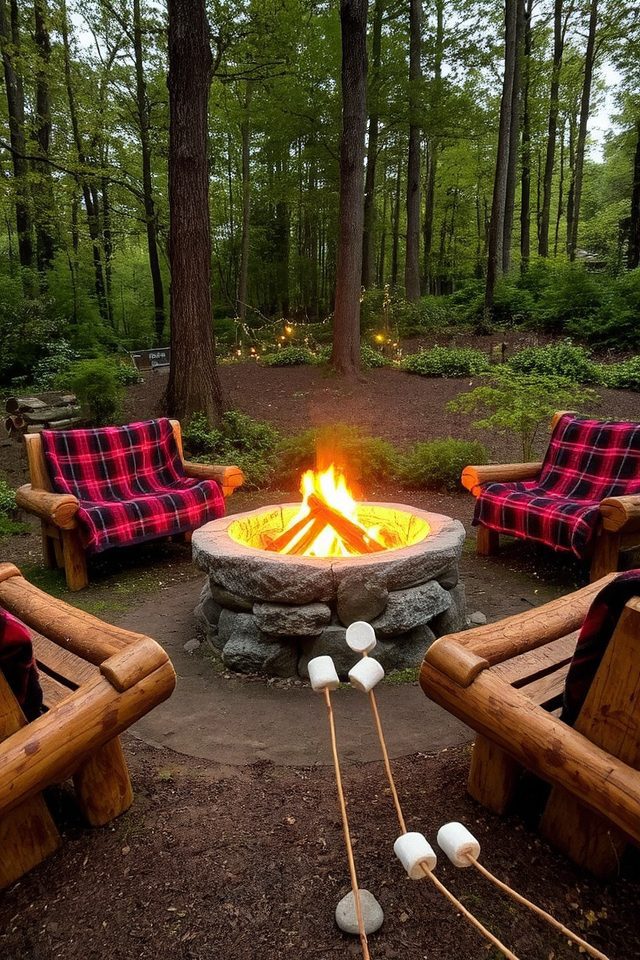
Creating a cozy fire pit in a wooded area can transform your outdoor space into a delightful gathering spot. Select a natural stone or a durable metal fire pit that complements your surroundings. Surround it with comfortable seating, such as log benches or rustic chairs, and add cozy blankets for warmth. Incorporate soft landscape lighting and nearby foliage to enhance the ambiance. This inviting setting is perfect for evenings of roasting marshmallows, sharing stories, and enjoying the serene sounds of nature.
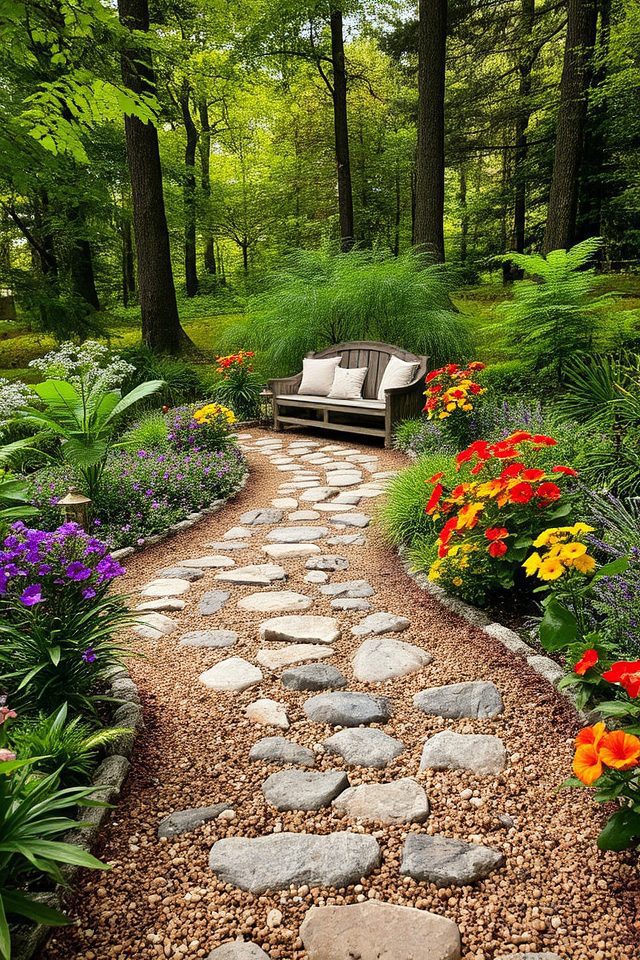
Incorporating decorative stones and gravel into your garden design can enhance the natural beauty of wooded areas while providing functional benefits. These materials can create defined pathways, add texture, and help with drainage in damp spots. Choose stones in varying sizes and colors to complement the surrounding foliage. Gravel can also serve as a base for flower beds or seating areas, making your wooded garden inviting and visually appealing while maintaining a harmonious connection with nature.
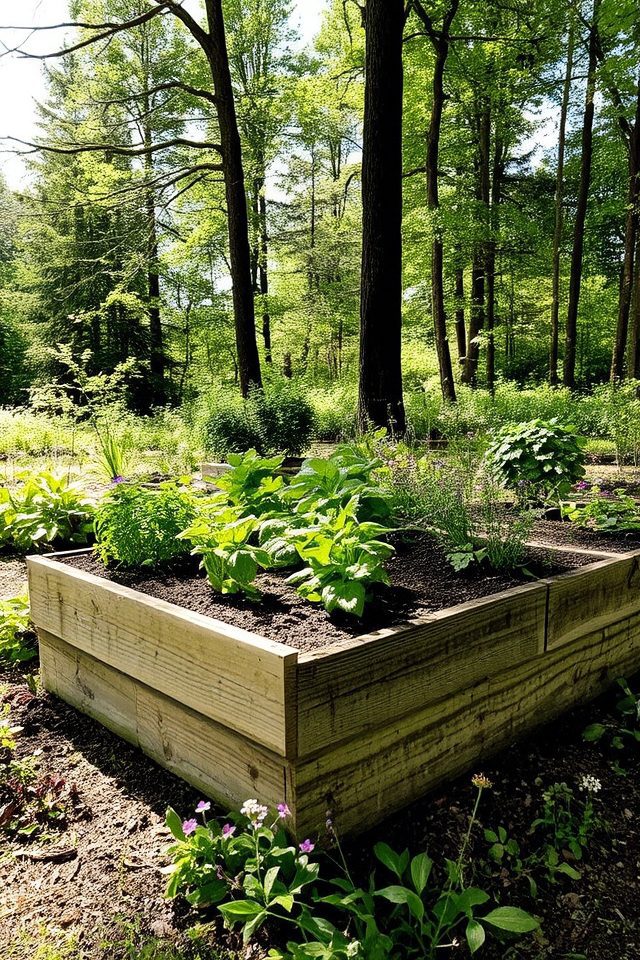
Building a raised garden bed in a wooded area effectively harnesses the unique landscape while enhancing plant growth. These beds elevate the soil, providing better drainage and warmth, which is essential in shaded settings. Use untreated wood to avoid chemical leaching and to blend seamlessly with the natural surroundings. By creating a raised bed, you can select suitable plants that thrive in partial sunlight, ensuring a vibrant and productive garden that complements the wooded environment.
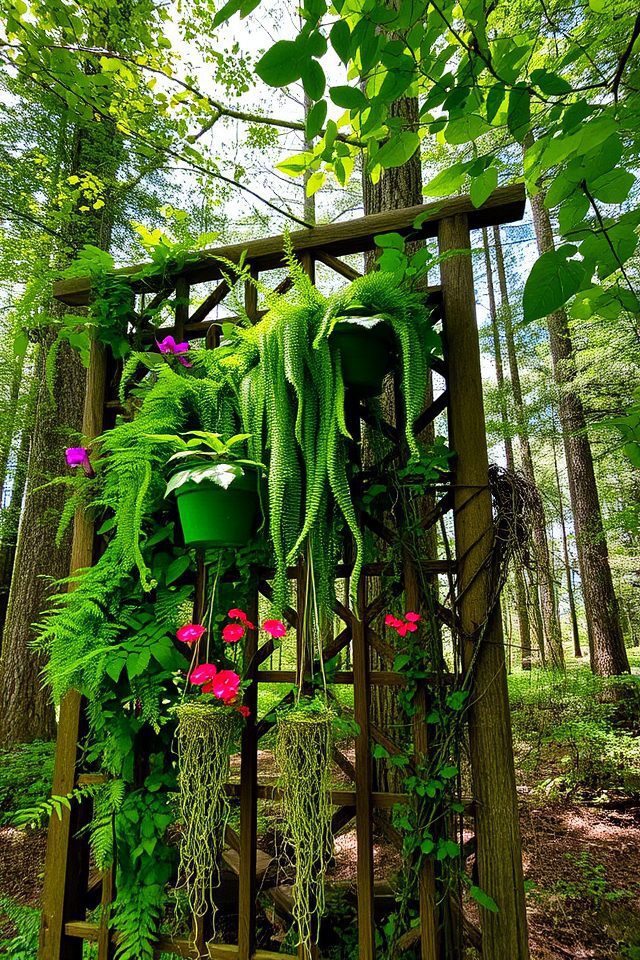
Vertical gardens are a fantastic way to maximize space and add a lush touch to wooded areas. By utilizing trellises, wall planters, and hanging pots, you can create a vibrant vertical garden that thrives in the dappled sunlight of tree canopies. These gardens not only enhance aesthetics but also improve air quality and provide habitats for birds and beneficial insects. Choose shade-tolerant plants like ferns or climbing vines to create a stunning green wall that harmonizes with the natural landscape.

Creating a relaxation spot in a wooded area can transform your garden into a serene escape. Choose a natural clearing or a sunny glade, and incorporate comfortable seating options like rustic benches, hammocks, or wicker chairs. Surround the area with lush greenery and wildflowers to enhance the natural ambiance. Consider adding a small fire pit or a water feature nearby for soothing sounds. This inviting space will be perfect for unwinding with a book or enjoying nature’s tranquility.
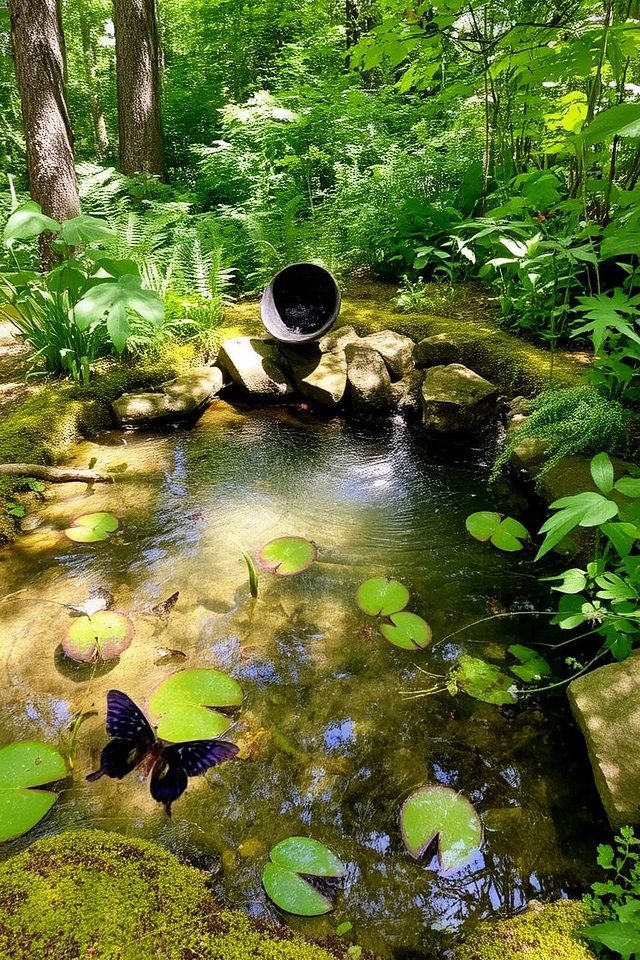
Incorporating water features into a garden set in wooded areas can enhance the tranquil atmosphere and attract wildlife. Consider adding a small pond, bubbling brook, or a decorative fountain that blends harmoniously with the natural surroundings. The sound of water creates a soothing ambiance, while reflections on the surface can brighten the shaded areas. Choose native aquatic plants to guarantee compatibility with the ecosystem, fostering biodiversity and further integrating your garden with the enchanting woodland environment.
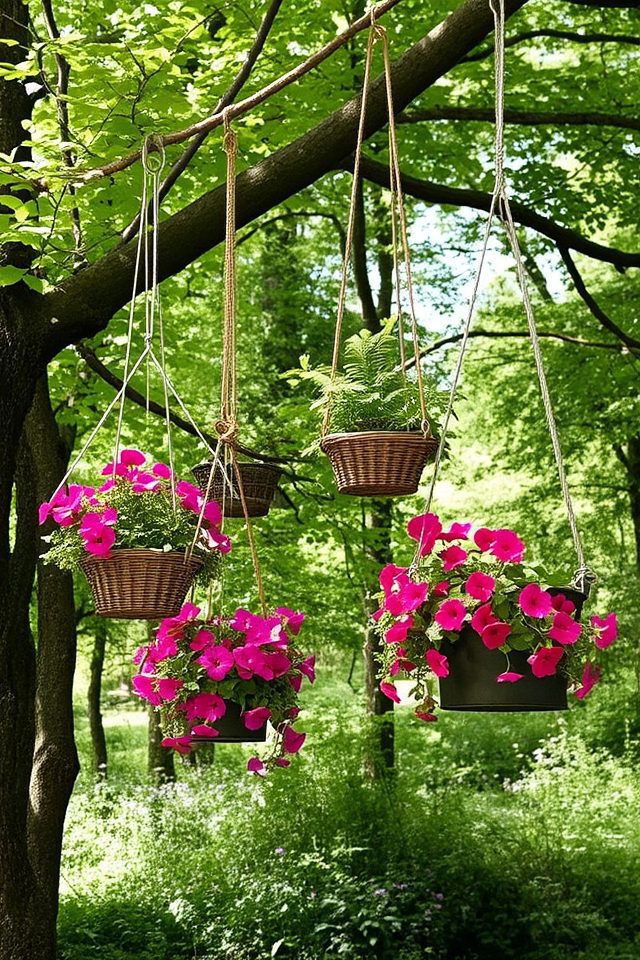
Utilizing hanging planters in wooded areas not only maximizes limited ground space but also adds visual interest at varying heights. These planters can be suspended from trees or sturdy hooks, allowing you to showcase a variety of plants, from trailing vines to vibrant flowers. Additionally, hanging planters help prevent soil compaction and provide better drainage. Embrace the natural ambiance of your surroundings while creating a lush, enchanting garden space above the forest floor.
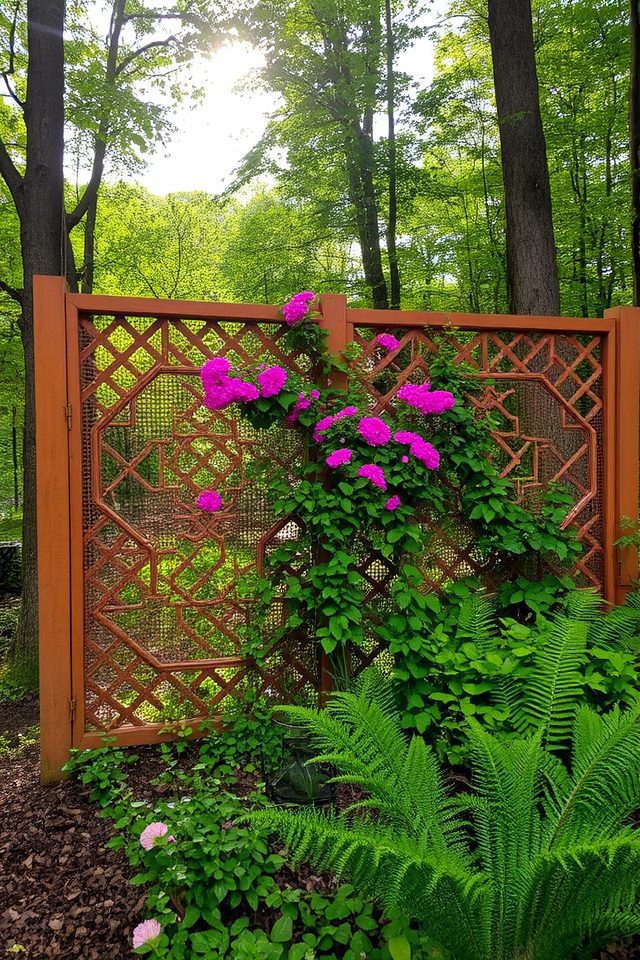
Decorative fences can enhance the charm of gardens in wooded areas while providing structure and privacy. Opt for materials like wood, wrought iron, or composite that blend seamlessly with the natural surroundings. Intricate designs, such as lattice patterns or painted finishes, can add visual interest without overpowering the environment. Incorporating climbing plants or greenery around the fence will further soften the look, creating a harmonious balance between the garden and the woodland backdrop.
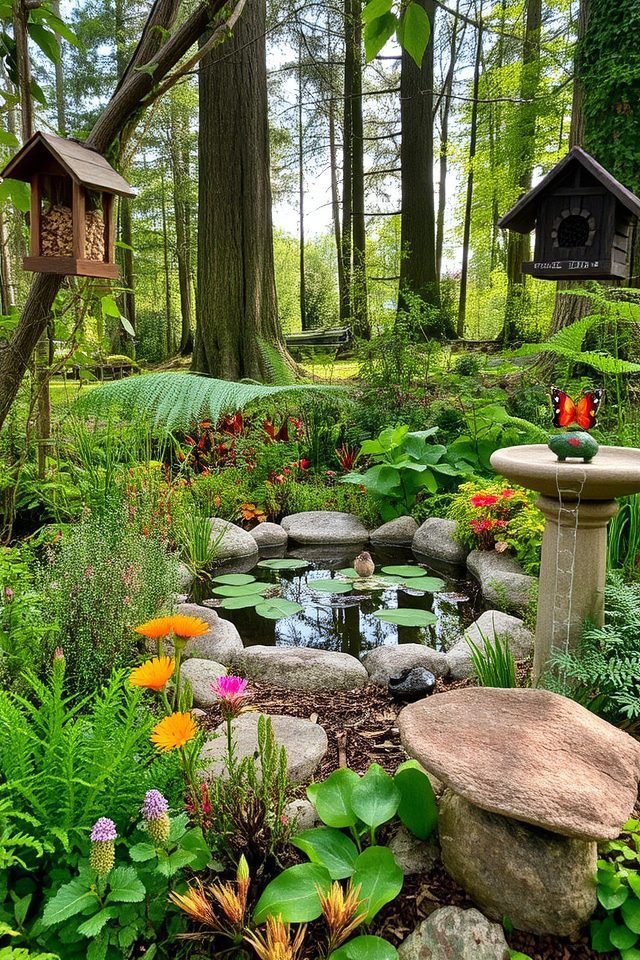
Creating a wildlife habitat in your wooded garden area can foster a thriving ecosystem and enhance biodiversity. Incorporate native plants that provide food and shelter for local wildlife like birds, insects, and small mammals. Consider adding features such as bird feeders, nesting boxes, and water sources like small ponds or bird baths. Avoid pesticides and chemicals to encourage a safe environment for creatures. This approach not only supports wildlife but also enriches your garden’s natural beauty.
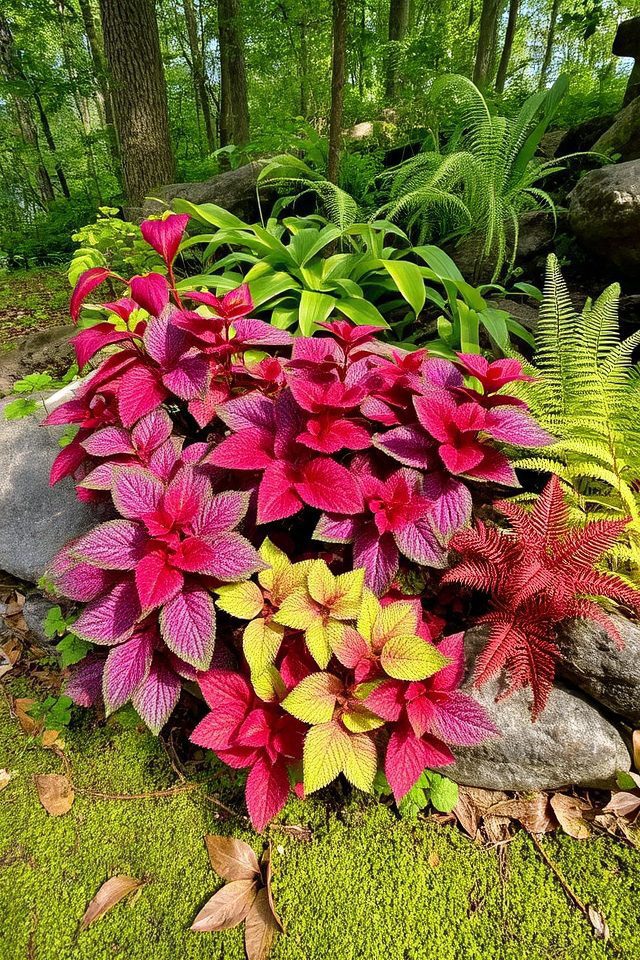
In wooded areas, colorful foliage plants can bring vibrancy and life to the shade. Consider incorporating varieties like heucheras, known for their striking leaves in shades of purple, red, and green. Ferns, with their intricate fronds, add textural contrast, while hostas contribute lush, green expanses that can be found in various hues. By layering these plants, you can create a stunning, visually rich garden that thrives in the filtered light of the forest.
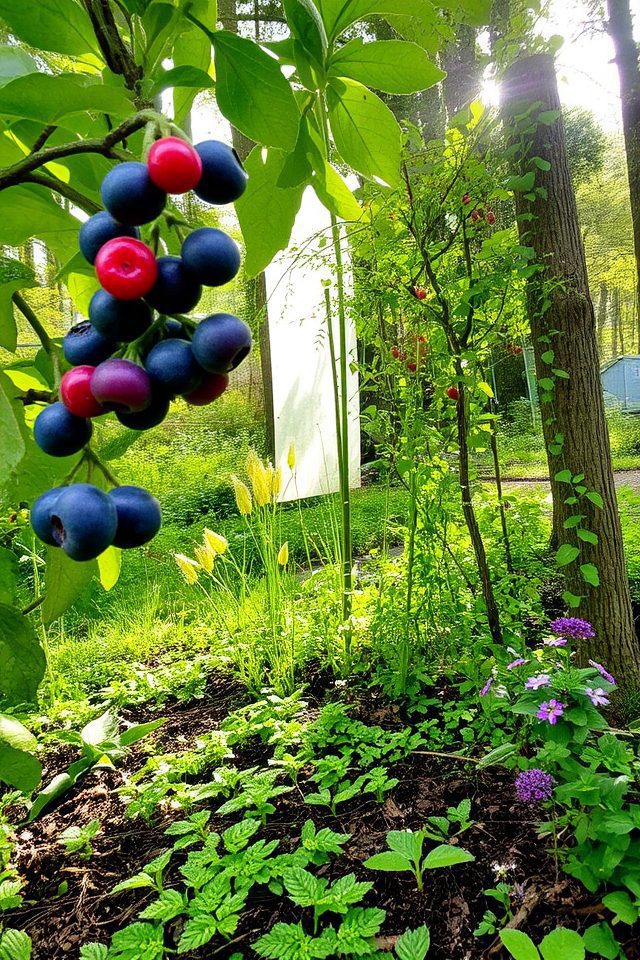
Integrating edible landscaping in wooded areas not only enhances the beauty of your garden but also promotes sustainability. Consider planting fruit-bearing shrubs and trees, such as blueberries and apples, that thrive in partial shade. Incorporate perennial herbs like chives and mint that can coexist harmoniously with native woodland plants. Use vertical gardening techniques, such as trellises for climbing vegetables, to maximize space and sunlight, creating a productive and attractive edible environment amidst the trees.
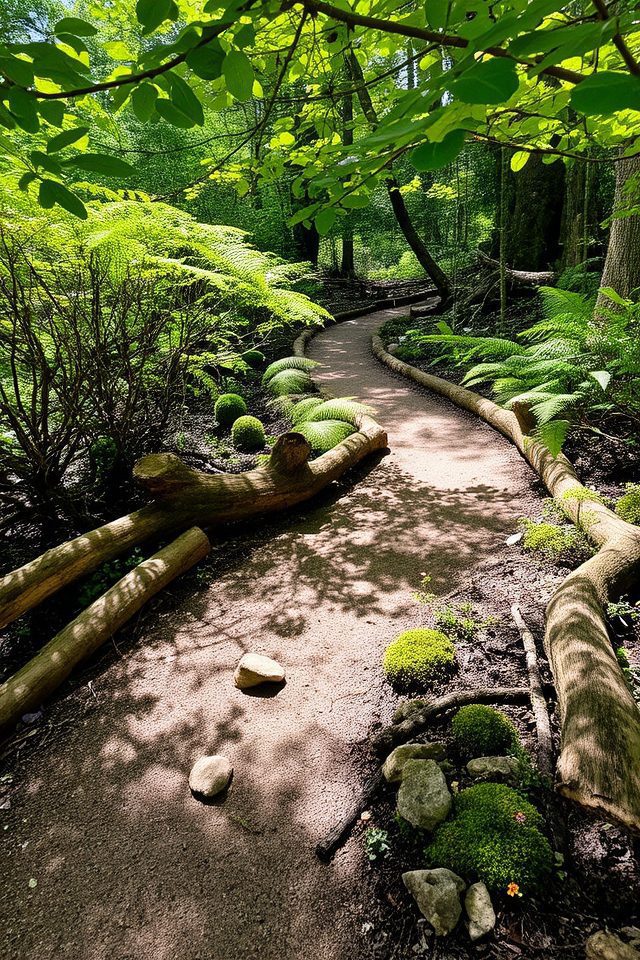
Incorporating natural borders in your garden can enhance the beauty and cohesiveness of wooded areas. Use materials like fallen logs, stones, or native shrubs to define paths and create boundaries between different garden zones. These elements not only blend seamlessly into the natural surroundings but also provide habitats for wildlife. Additionally, natural borders can help retain soil moisture and reduce erosion, making them both functional and aesthetically pleasing.
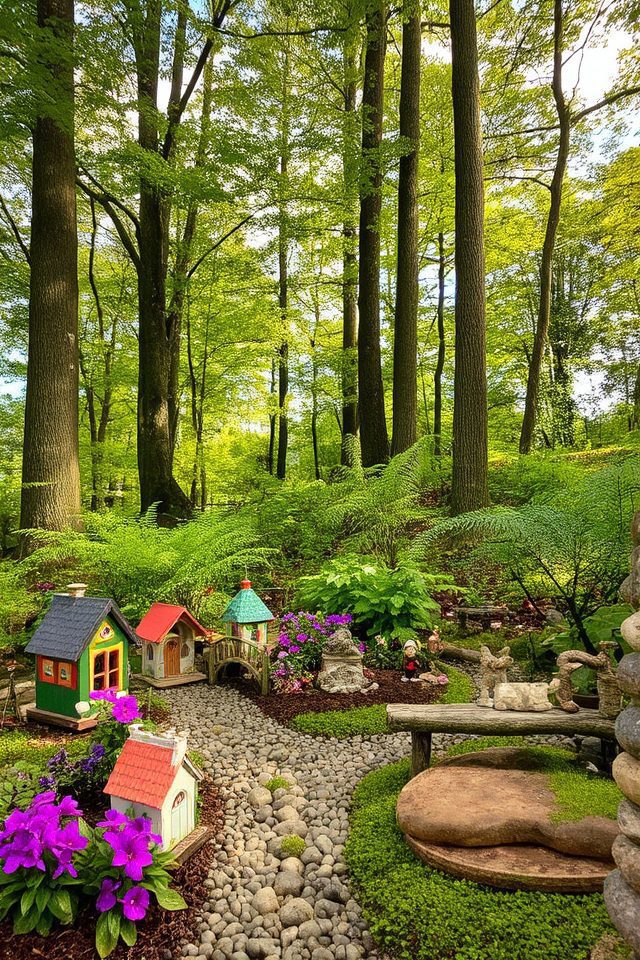
Creating a themed garden area in a wooded space allows you to harmonize with the natural surroundings while showcasing your creativity. Consider themes like a fairy garden with miniature structures and whimsical plants, or a zen garden featuring stones, sand, and tranquil water features. Utilize native plants to enhance your theme and provide habitat for local wildlife. By integrating decorative elements such as sculptures, benches, or trellises, your themed garden can become a serene retreat that reflects your personality and vision.
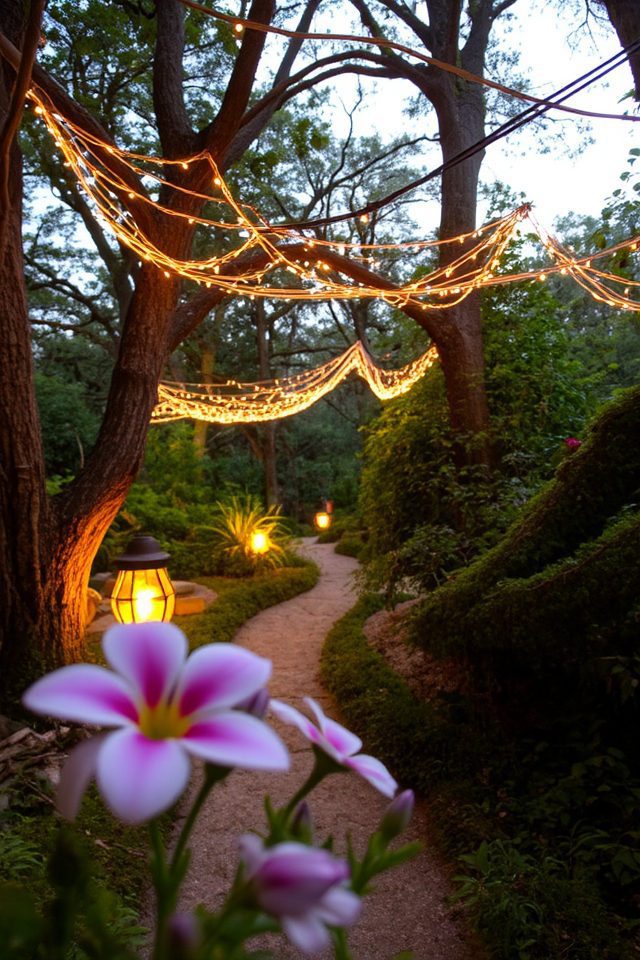
Incorporating solar lighting into your wooded garden can transform your outdoor space into a magical retreat. Solar lights are eco-friendly and easy to install, making them perfect for illuminating paths, highlighting trees, or accentuating garden features. As dusk falls, the gentle glow of solar lanterns or string lights creates a warm ambiance while enhancing the natural beauty of the surrounding flora. Additionally, they provide safety and visibility without the need for electrical wiring, allowing you to enjoy your garden day or night.
By transforming your wooded area into a vibrant garden, you’re not just enhancing your space; you’re also playing a critical role in local ecology. Did you know that gardens with native plants can support up to 50% more wildlife than those filled with non-natives? As you embrace these ideas—native plants, cozy fire pits, and inviting pathways—you’re creating a sanctuary that’s both beautiful and beneficial. So grab your tools, let your creativity flow, and watch nature thrive around you!
